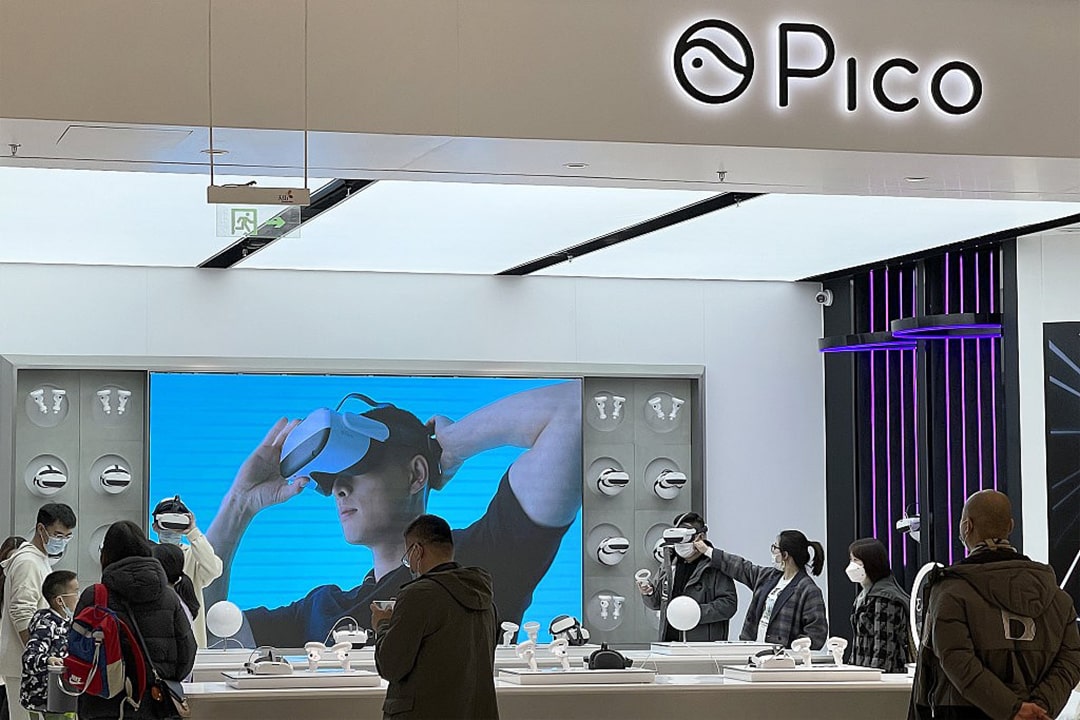This story is the third part of a four-part series that delves into the factors leading to ByteDance’s decision to scale back Pico, its virtual reality business. The second part discusses the ramifications of Pico deciding to emulate Meta’s strategy in the Chinese market. Read it here.
ByteDance is known for its pattern of swiftly entering and exiting new ventures. How the Chinese tech giant has dealt with Pico, its virtual reality business, is testimony of this dynamic.
According to several employees from Pico’s gaming department, in July and August 2022, when realization dawned that gaming wasn’t a viable path, ByteDance imposed strict control on the budget of the department. This even extended to denying approval for server costs related to introducing overseas games and the budget earmarked for game operations.
Simultaneously, Pico quickly pivoted, redirecting its focus to video content and livestreaming—domains where ByteDance has excelled. Spearheading this strategic shift was Ren Lifeng, president of Xigua Video and a prominent figure at TikTok, who is deemed a “hero” and a “firefighter” in ByteDance’s hierarchy. A mid-level employee told 36Kr that Ren once even received a 100-month year-end bonus.
The immersive experience of wearing a VR headset, likened to “sitting in a living room,” led Pico to explore video consumption as a potential application scenario. However, this shift toward content did not resonate with the majority of Pico’s experienced VR industry employees, who questioned the viability of VR videos based on their experience.
An illustrative precedent is Meta’s Oculus Go, a VR video device, which failed to gain traction in the market, selling only 250,000 units in a year, well below the anticipated one million units. Despite being a leader in the industry, Meta abandoned the venture.
“Ren Lifeng comes from the video sector. Him coming to Pico is like ‘carrying a hammer, seeing everything as a nail.’ Short videos and livestreaming exploded on phones, so ByteDance also wanted to gamble on whether a miracle in VR was possible,” said Huang Wei, an employee in Pico’s gaming department.
Pico’s video team expanded rapidly, adopting an ambitious strategy that involved significant spending to build a VR video ecosystem. This included a hefty RMB 1 billion (USD 140.5 million) investment in acquiring broadcasting rights for the Qatar World Cup to be broadcast on Pico. Concerts featuring heavyweight stars like Zheng Jun and Wang Feng were also paid for, along with collaborations with popular titles like “The Three-Body Problem” to plan various 2D and 3D programs.
However, reality unfolded as VR hardware struggled to provide an exceptional video experience.
“Why would I use VR to watch what I can watch on a projector, TV, tablet, or at a movie theater? The increment of experience that VR brings to video is immersion, but it comes at the cost of strapping a heavy half-kilogram lump on your head,” said a Pico employee. His Pico 4 has been gathering dust for over six months.
VR hardware faces constraints in optics, display, and battery capabilities, limiting mobility and portability. The nature of short video consumption, fragmented and scattered throughout the day, poses a natural contradiction to VR’s immersive experience.
For long videos, Huang told 36Kr that the production cost of VR videos is exorbitant, involving issues like network transmission, 5G penetration, and more. These challenges are beyond Pico’s sole capacity to manage.
Currently, the content that aligns with VR is primarily adult films that require an immersive experience. While this industry is mature and profitable in other countries, it operates in a gray area in China. Pico gradually shifted its content toward obscure “borderline” live shows, departing from its initial focus on mainstream video content. An employee from Pico’s hardware department shared a surprising experience while using the Pico 4 to watch the Qatar World Cup. To his amazement, the Pico VR’s livestreaming experience underwent a notable transformation after 2 a.m., featuring a shift toward content of “girls gyrating.”
Despite a long period of validation, livestreaming did show results for Pico in terms of usage time and revenue, constituting 30% of Pico’s usage time, with rewards almost matching gaming income. However, these results failed to translate into the sales that ByteDance’s high-level management prioritized.
An examination of backend user data revealed that Pico’s actual sales in 2022 were less than 600,000 units, with the highly anticipated Pico 4 falling short of 300,000 units. Daily active users were less than 100,000, significantly below ByteDance’s expectations for Pico. A spokesperson from Pico rejected the insights, labeling them as inaccurate. However, no specific data was provided to substantiate the refutation.
Li Jie, vice president of VR startup Xiaopai, offered a pragmatic perspective. “VR and AR are still in their early ‘brick phone’ stage compared to smartphones, following the objective laws of development… don’t fantasize about miraculous overnight success,” Li said.
Note: Some employee names may have been changed to protect their identities.
The fourth and final part of this series delves into the splintering of Pico into factions following an influx of employees from ByteDance. Read it here.
KrASIA Connection features translated and adapted content that was originally published by 36Kr. This article was written by Qiu Xiaofen for 36Kr.

